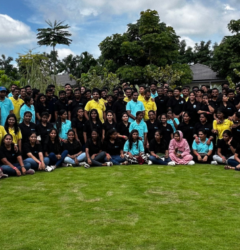
In March 2021, 1.01 million people quit their jobs, a number the United Nations had never seen until then. In September, the number became 4.25 million people. By November 2021, the number of resignations reached an all-time high of a daunting 4.5 million. Over 47 million people voluntarily left their jobs in 2021. And this is not limited to America; 39 of 50 countries surveyed saw higher employee resignation rates. This is the great resignation or the big quit. This mass exodus of people from the workforce seems to have followed us into 2022. Job resignations are still up by 23% compared to pre-pandemic levels.
The Great Resignation explained
From 2009, the monthly quit rate increased by 0.1 percentage points every year. But this number dipped lower than expected during 2020. The pandemic and the ensuing uncertainty got people to hold on to their jobs. In 2021, stimulus checks were sent out, vaccines were developed, and these improvements lessened some uncertainty. This caused the chuck of the population that didn’t quit in 2020 and the usual attrition rate, thus triggering the great resignation.
The pandemic caused 71% of employees to rethink their career choices, according to research. It further fuelled the great resignation and has carried it over to 2022. There are several reasons for this.
Reasons for The Great Resignation
Workplace frustration
The pandemic got people to re-evaluate their priorities and what they were willing to accept. It gave them a glimpse of life, a healthy work-life balance, no childcare expenses, and no commute time. When the uncertainty was high during the pandemic, people held on to their jobs despite being unhappy. When the job market improved, it boiled down to great resignation.
Overwork & Burnout
The pandemic changed everything rapidly, and many employees faced a huge workload, especially with many companies having to let people stay afloat. A consultancy firm, Robert Half, reported an increase of 44% in the number of burnouts reported by employees. Half of this is credited to not taking Paid Time Off during the pandemic.
Reconsideration
The way people look at work changed in the light of the deaths and serious illnesses they witnessed. It made them rethink staying in jobs that interfered with being able to care for sick family members or kids, especially since schools closed down. Certain demanding white-collar jobs like consulting became less rewarding because work from home robbed entry-level workers of client interactions, peer learning, and training, which usually justified the workload for junior personnel.
Low compensation
The consumer price index rose worldwide during the pandemic. So, employees are expecting better compensation to stay at their jobs and enjoy their life which was another mindset that emerged during the pandemic.
Also Read: Top 44 Remote Working Tools you need to work from anywhere
Job dissatisfaction
LinkedIn published a study stating that 79% of millennials confessed to being unhappy at their jobs. The current workforce has diverse skills, and they expect to be part of critical work instead of mundane tasks that can be automated.
Combating these issues and stopping The Great Resignation of 2023
Reimagine the office
Let’s face it; we are never getting back to the old normal of crowded offices and hour-long commutes. The pandemic proved that the entire workforce did not need to be in the office to be productive. And employees seem to prefer to work from home as well; we all did get a little too comfortable working from our PJs for almost two years!
The current workforce has more opportunities than ever, and companies need to respond to this since flexibility will play a massive role in losing your talent or retaining them. Especially since 39% of the workforce said they would consider quitting if they weren’t offered this flexibility, according to a study.
When it comes to Millennials and Gen Z, the figure is as high as 49%. Losing half the workforce is not an option! We can already see this shift; 1 in 7 jobs listed on LinkedIn have a remote work component as opposed to 1 in 67 before the pandemic (March 2020). This will also allow you to hire a diverse workforce without incurring any additional costs, an actual way to make everyone happy!
Also read: Post-Pandemic Productivity 101: A Hybrid Model of Work From Home & Office!
Focus on your employees
The stress, anxiety, and burnout caused by the pandemic cannot be overlooked, the world went through a horrific phase, and your employees ARE affected by it. Prioritizing your employees’ mental and physical health is essential from the humanitarian perspective and ensuring they bring their best selves to work. In a survey by Microsoft’s Work Trend Index, 53% of people said prioritizing their mental health and well-being. The employees are looking for companies that will support them, not derail them. It is even more critical to make sure your culture and environment are a good fit for your employees. With hybrid offices, special care is required to ensure everyone feels included, and managers need to be trained to take up this unique challenge.
Growth opportunities
Being stuck is not a good feeling. Your employees need to know that they are getting somewhere and aren’t stuck in a job without a future. One of the primary reasons for switching jobs is to earn more and advance professionally. 54% of workers feel that their current employers don’t consider their aspirations.
A study shows that 74% of employees feel better opportunities than in their current employment, which is a staggering figure. Benefits and appropriate compensation go a long way in retaining employees, especially when you evaluate this against hiring and training new employees.
Making work meaningful with Automation
The expectations from the current workforce are different. People no longer want their entire morning occupied with pointless paperwork or things that can easily be automated. They want an opportunity to engage in meaningful work that makes a difference. Automation makes your employees happier and, therefore, more willing to stay with you. So, it’s crucial to identify the blind spots in your system and fix them. And no, Automation doesn’t have to be expensive and complicated. With advanced no-code platforms that offer no-code process automation, employees can automate processes to suit their requirements, making work more efficient and accessible for everyone.
Show your employees you care
How you treat your employees is crucial, even those leaving you. Especially in this current scenario where hiring skilled talent is a challenge. Especially since the great resignation started because of how companies treated their employees during the pandemic, it is essential to let your employees see the big picture to see how their contribution is helping with the organization’s overall goal. Show them that you care about them and their families and their financial stability and quality of life.
Conclusion
It seems like the great resignation is here to stay. Being proactive and responding to situations is one of the surefire ways to ensure your organization’s resilience. Understanding the problem is the first step to solving it, so kudos to you for being in it!
Advanced no-code platforms like Quixy can help make work meaningful by letting your employees automate broken processes within the system, increasing efficiency and job satisfaction. These steps should help your organization avoid or, at the very least, lower the impact of the great resignation.
Login
Please login to comment
0 Comments
Oldest















